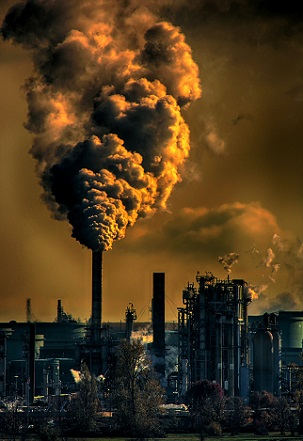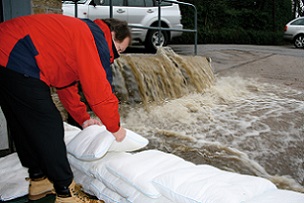 The impact of climate change will have a catastrophic effect on flooding in the UK says the Environment Agency
The impact of climate change will have a catastrophic effect on flooding in the UK says the Environment Agency
 Expect severe flooding in our towns and cities in the years ahead
Expect severe flooding in our towns and cities in the years ahead
 More and more people are stocking up on FloodSax alternative sandbags
More and more people are stocking up on FloodSax alternative sandbags
Protect your homes and businesses from flooding or suffer dire consequences says the Environment Agency
Flood defences won’t be able to cope with the impact of climate change in the coming years so people will need to protect their own homes and business from now on.
The dire warning from the Environment Agency also paints something of a doomsday scenario that inaction on climate change could see killer floods hitting the UK in the same way that floods claimed hundreds of lives in Germany this summer.
In a report ahead of November’s United Nations COP26 global climate summit in Glasgow involving 200 countries, the Environment Agency’s message is stark and to the point: “Adapt or die.”
Environment Agency chair Emma Howard Boyd has warned that traditional flood defences will not be able to prevent extreme weather events.
“Some 200 people died in this summer’s flooding in Germany,” she said. “That will happen in this country sooner or later however high we build our flood defences unless we also make the places where we live, work and travel resilient to the effects of the more violent weather the climate emergency is bringing.
“It is adapt or die. With the right approach we can be safer and more prosperous. So let’s prepare, act and survive.”
People still think local councils will provide sandbags if flooding is imminent but they have no responsibility to do so and the vast majority don’t. This is why more and more people are stocking up with FloodSax (http://www.floodsax.co.uk/) alternative sandbags which are space-saving to store and quick and easy to deploy. They inflate on contact with water to become instant sandbags.
The Environment Agency is calling for new thinking on flood protection, saying that ‘business as usual’ approaches are no longer adequate. In practical terms, that means better co-ordination between companies, national agencies and local authorities with businesses and homeowners encouraged to take basic steps to flood-proof their own properties.
In its report to Government, the Environment Agency has warned of more extreme weather leading to increased flooding and drought, sea level rises of up to 78cm by the 2080s and public water supplies needing more than 3.4 billion extra litres of water per day by 2050.
Emma Boyd added: “Significant climate impacts are inevitable. We can successfully tackle the climate emergency if we do the right things, but we are running out of time to implement effective adaptation measures. Our thinking must change faster than the climate.”
The United Nations COP26 global climate summit in Glasgow in November is seen as crucial if climate change is to be brought under control. Almost 200 countries are being asked for their plans to cut emissions and it could lead to major changes to our everyday lives.
Even with a 2°C temperature rise compared to pre-industrial levels – and the current projection is it will be more than that - key predictions within the report include:
- Winter rainfall is expected to increase by approximately 6% by the 2050s and by 8% by the 2080s, compared to a 1981-2000 baseline.
- Summer rainfall is expected to decrease by approximately 15% by the 2050s compared to a 1981-2000 baseline.
- London’s sea level is expected to rise by between approximately 23cm by the 2050s and 45cm by the 2080s.
- River flows will be more extreme. Peak flows are expected to be up to 27% higher in the 2050s while in the summer months river flows could be 82% lower by as soon as 2050.
- Public water supplies are expected to require more than 3.4 billion extra litres of water per day if no action is taken before 2050.